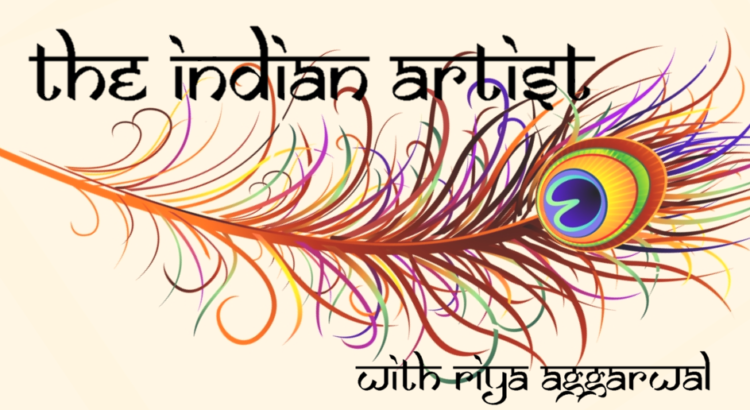Whenever I visit my family in India for the summers, one of my favorite parts of the trip is when my grandmother takes me to the street bazaars to get my mehndi done. I sit amongst the bustling crowd on a simple plastic crate, sounds of aunties and uncles in the background, bartering over the prices of everything from spices to table cloths. In front of me sits a young man wearing worn out and baggy clothing, hands stained with mehndi, papers full of practiced designs scattered around. In no time, I have a beautiful design of flowers and vines laid out on my hands in the deep, rich paste. I take immense care in making sure that I keep my hands perfectly still, bumping into nothing and nobody, never disrupting the design. When I get home, I carefully apply a mixture of lemon juice and eucalyptus oil in hopes of ensuring and dark and long-lasting stain.
Mehndi is a beautiful part of Indian and South Asian culture and a form of art in its own right. From a young age, I have always been fascinated with the art of mehndi, the intricacies of the designs, the possibilities with a single cone.

How about a little history? Henna, the plant itself, has been around for about 5,000 years. The plant, which is found in many parts of the world, is a small four-petaled flower ranging from yellow to pink. Twice a year the leaves are harvested, dried, and ground into a fine powder. This powder is used to dye hair and for the ancient eastern art of mehndi. Powder from the henna plant can be fine or coarse and pure natural henna powder can be bright to deep green, khaki, or brown. These powders render stains that are orange, red, burgundy, cinnamon, bittersweet chocolate brown, burgundy-black, black cherry, and near-black in color. Colloquially, mehndi and henna have become the same, referring to the method of applying body art with a smooth silky paste. It is most commonly applied to the hands and feet during times of joy and celebrations. No Indian wedding is ever complete without a Mehndi ceremony.
One thing that always fascinated me about the art of mehndi was the divide between genders. Historically in many places around the world, America included, women were reserved for the “artsy” jobs. While men went off to work in factories and mechanical plants, girls were trained in the arts, learning how to cook and embroider. However, this seemed to be flipped in regards to henna artists. On the streets where you could get a full design done in under ten minutes for 50-60 rupees (not even a dollar), only men dominate. In the professional arena, where bridal henna can cost upwards of hundreds of dollars, take hours on end to complete, and require appointments in advance, there only seem to be female artists in the business. This parallel interested me deeply and was something that I wished to capture in a recent piece of mine.
This piece titled The Art Between Genders captures a male street artist applying henna to the hand of a higher-class woman, as witnessed commonly in India. The foreground is done entirely in mehndi paste, diluted to behave like watercolor. The background is done in acrylic paint and is meant to depict common and traditional henna designs. Through this piece, I hope to spark conversation about the interesting dichotomy I witnessed and spread love for the beautiful art form that is mehndi.
Henna will continue to be a topic of future posts where I will dive into my own experience as a henna artist, building my business, and even tutorials on how common designs can be created. If anything that I discussed in this post stands out or if any questions arise please feel free to comment and share your thoughts.
Looking forward to next Sunday!
~ Riya
Personal website: https://riyarts.weebly.com/



 ng to my roots while wanting to experience beyond the uber-traditional and what is “expected”, has proven to be more than challenging.
ng to my roots while wanting to experience beyond the uber-traditional and what is “expected”, has proven to be more than challenging. In Hindi, “dhulan” means the bride. This piece, done in various mediums ranging from watercolor, colored pencil, fabric, and gold leafing, is a rendition of a traditional Indian bride decorated in intricate ornaments and clothing. In the drawing, all of the jewelry has been removed in place of different scenes. Her necklace symbolizes the destruction of true love as two hands reach for each other but never meet. The earrings, nose ring, and forehead decoration are each whited-out. Instead, they are replaced by images demonstrating different modes of stress and mental health challenges many children face but are oftentimes overlooked.
In Hindi, “dhulan” means the bride. This piece, done in various mediums ranging from watercolor, colored pencil, fabric, and gold leafing, is a rendition of a traditional Indian bride decorated in intricate ornaments and clothing. In the drawing, all of the jewelry has been removed in place of different scenes. Her necklace symbolizes the destruction of true love as two hands reach for each other but never meet. The earrings, nose ring, and forehead decoration are each whited-out. Instead, they are replaced by images demonstrating different modes of stress and mental health challenges many children face but are oftentimes overlooked.